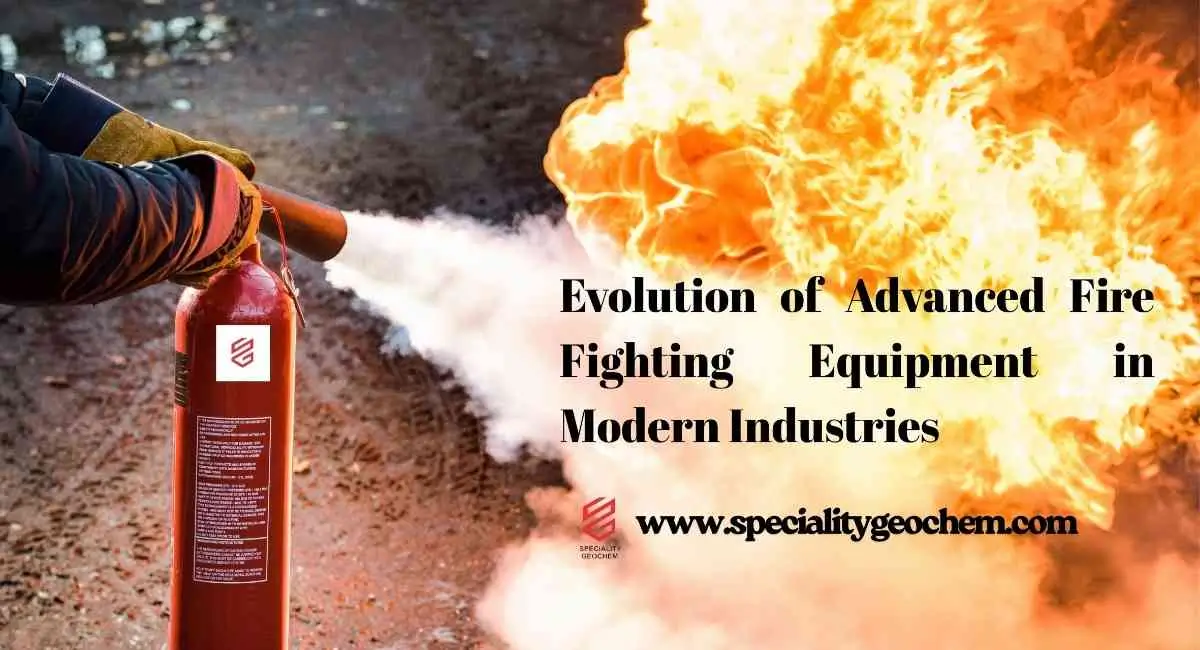Fire has always been one of the greatest threats to human life, property, and industry. In ancient times, buckets of water and rudimentary tools were the only defense against destructive flames. Today, with rapid industrialization, automation, and the presence of hazardous materials, traditional fire control methods are no longer sufficient. This shift has given rise to advanced fire fighting equipment, which blends technology, design innovation, and safety standards to ensure faster, more reliable fire suppression.
Modern industries, from manufacturing plants to IT data centers, face unique fire hazards. To minimize downtime, save lives, and safeguard assets, companies are investing in cutting-edge fire fighting systems that go beyond traditional extinguishers and water hoses. The evolution of advanced fire fighting equipment showcases not just technological progress but also a growing commitment to proactive fire safety management.
Early Fire Safety Practices: From Basic to Semi-Advanced
Before the rise of automation, most industries relied on basic fire fighting equipment such as water buckets, sand pits, and portable fire extinguishers. While these tools were cost-effective, they had clear limitations:
- Human Dependency: They required trained individuals to operate effectively.
- Limited Reach: Portable extinguishers could only control small fires.
- Delayed Response: Fires often spread faster than manual suppression efforts.
By the late 20th century, semi-advanced solutions like sprinkler systems, hydrants, and smoke detectors became standard in industrial facilities. These systems represented a significant leap forward but were still reactive, engaging only after flames or smoke were detected.
The Rise of Advanced Fire Fighting Equipment
The industrial era of the 21st century demanded new solutions. Flammable chemicals, high-rise buildings, large warehouses, and automated production lines required faster and more intelligent fire suppression methods. This need led to the development of advanced fire fighting equipment, designed with precision, automation, and versatility.
Key Characteristics of Advanced Systems
- Automation and Self-Activation
Modern devices like fire extinguisher balls and suppression tubes activate automatically when exposed to flames, eliminating human dependency. - Integration with Smart Technology
Advanced fire alarms and detectors are connected to central monitoring systems, enabling real-time alerts and remote control. - Multi-Agent Fire Suppression
Unlike traditional water-based systems, today’s solutions use foam, dry chemical powders, clean agents (like FM-200), and CO₂ for specialized industrial needs. - Eco-Friendly Design
Many modern agents are non-toxic, ozone-friendly, and leave minimal residue, reducing downtime after fire incidents.
Examples of Advanced Fire Fighting Equipment
1. Automatic Fire Suppression Tube Systems
Widely used in industries with electrical panels, machinery, and server rooms, these tubes detect heat and release extinguishing agents instantly at the source of the fire.
2. Fire Extinguisher Balls
A compact, spherical device that bursts upon contact with fire, dispersing dry chemical powder. It is user-friendly, requires no maintenance, and is suitable for both small industries and households.
3. Clean Agent Suppression Systems
These systems use environmentally safe gases like FM-200 or NOVEC 1230 to suppress fire without damaging sensitive equipment. They are crucial for IT companies, laboratories, and aviation sectors.
4. Drones for Fire Surveillance
Industries with expansive areas such as oil refineries and mining operations employ drones for aerial fire monitoring and heat detection, enabling quick response strategies.
5. Thermal Imaging Cameras
Fire fighters and industrial safety teams now use advanced imaging devices to locate hidden fire spots and monitor high-temperature zones.
6. IoT-Enabled Smoke Detectors
Internet-connected detectors provide instant mobile alerts and integrate with industrial safety dashboards for real-time decision-making.
Benefits of Advanced Fire Fighting Equipment in Industries
- Faster Response Time
Automatic devices minimize delays, ensuring fires are controlled in their initial stages. - Reduced Human Risk
Self-activating systems reduce the need for workers to approach hazardous zones during emergencies. - Cost-Effective in the Long Run
Although advanced systems have higher installation costs, they prevent large-scale losses, proving economically beneficial. - Regulatory Compliance
Governments and global safety bodies mandate the use of advanced systems in certain industries, ensuring better legal compliance. - Business Continuity
By preventing major disruptions, industries can protect both their workforce and their operational efficiency.
Evolution in Different Industrial Sectors
Manufacturing Plants
High-heat machinery and chemical usage demand specialized fire suppression equipment, including clean agents and automatic suppression tubes.
Oil & Gas Industry
Explosion-proof extinguishing systems and foam-based suppression are widely used to manage flammable liquids and gases.
IT & Data Centers
Clean agent suppression systems protect expensive servers and electronic assets without causing damage from water or residue.
Healthcare Sector
Hospitals integrate IoT-based alarms, advanced sprinklers, and clean agents to protect patients, equipment, and sensitive medical supplies.
Residential & Commercial Buildings
High-rise apartments and malls now rely on advanced sprinklers, fire alarms, and automated evacuation systems.
Future Trends in Fire Fighting Technology
- AI and Machine Learning Integration
Predictive analytics will soon detect fire risks before they occur, allowing industries to take proactive measures. - Robotics in Fire Suppression
Robots designed for hostile environments will carry out fire suppression in areas unsafe for humans. - Eco-Sustainable Fire Agents
Future extinguishing chemicals will be greener, aligning with global sustainability goals. - Smart Building Integration
Fire safety systems will integrate seamlessly with smart building management for holistic safety solutions.
Advanced Fire Fighting Equipment: Conclusion
The journey from water buckets to AI-enabled fire suppression is a testament to how far humanity has come in prioritizing safety. The evolution of advanced fire fighting equipment reflects not only technological innovation but also a shift in mindset—safety is no longer a reactive measure but a proactive investment.
As a trusted fire fighting equipment manufacturer in India, Speciality Geochem is committed to driving this transformation by delivering innovative, eco-friendly, and reliable solutions. For modern industries, advanced fire safety solutions are not optional luxuries; they are essential components of operational resilience. With our focus on quality and continuous innovation, we ensure that every product we manufacture is designed to safeguard lives, assets, and businesses.
At Speciality Geochem, we believe the fire fighting equipment of the future will not only be more efficient but also smarter, sustainable, and life-saving—making safety a responsibility fulfilled with excellence.

